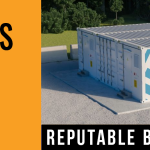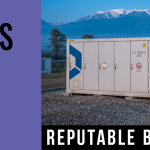
Energy Toolbase hosted a webinar recently entitled “Modeling the Economics Residential Energy Storage Projects in California” where we shared our latest insights on the market. We’re constantly learning and adjusting our thinking as the market evolves. We’re fortunate to have a front row seat, working closely with many of the leading energy storage system (ESS) equipment vendors and project developers in California.
From that webinar and our experience in the industry, here are the top 6 big-picture thoughts on the current state of the residential storage market in California from Energy Toolbase:
Demand is strong and projected to continue growing rapidly
Market data definitively shows that residential storage deployments in California are growing rapidly. The Smart Electric Power Alliance recently published the “2019 Energy Storage Market Snapshot” report, which reported 175.5 MWh of residential storage capacity added in 2018, which was an increase of 500% compared to 2017 levels. In California alone, the report counted 99.9 MWh of residential storage interconnected in 2018, an increase of 629% vs. 2017 levels.
Wood Mackenzie’s “Q2 2019 U.S. Energy Storage Monitor” report also ranked California as the top state for residential storage deployments for 2018 and also Q1 of 2019. The report forecasts strong continued growth in the residential segment over the next five years, with annual megawatt storage deployments expected to more than double in 2020 vs. 2019. Looking out over the next five years, WoodMac forecasts residential deployments to grow by over five-times in 2024 vss 2019 projections.
The current allotment of residential Self-Generation Incentive Program (SGIP) dollars is virtually gone. SDG&E exhausted its residential budget over a year ago, PG&E recently opened step 5 of 5 in early July and reserved all funds in less than three weeks. SCE is currently in step 5 of 5. Meanwhile, on the commercial side, SDG&E, PG&E and SCE are still in step 2 or 3 of 5 for SGIP. The good news for residential storage developers is that the SGIP budget is scheduled to get a huge replenishment soon thanks to Senate Bill 700 which passed the California legislature last year.
California has the best TOU rates for residential ESS economics in the country
We’ve evaluated residential time-of-use (TOU) rates in every state and California’s are the most advantageous for energy storage economics in the country. This is especially relevant given that all new solar customers in the big three investor owned utility (IOU) territories in California are now required to take service on a TOU rate after going solar, which was mandated in the big NEM 2.0 ruling in 2016.





